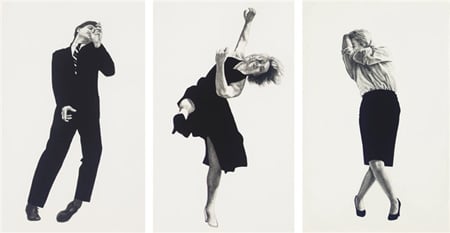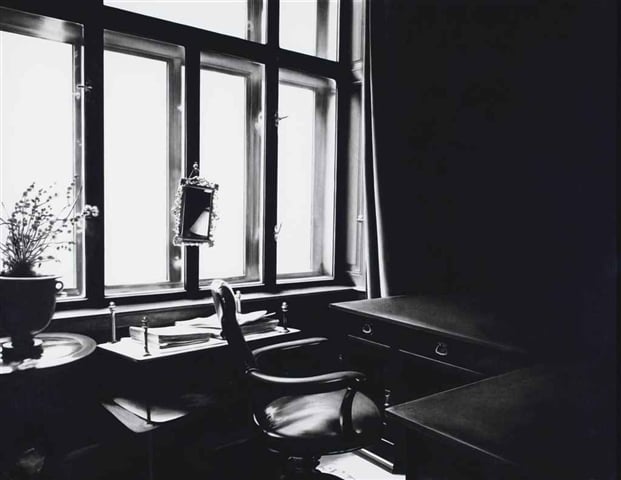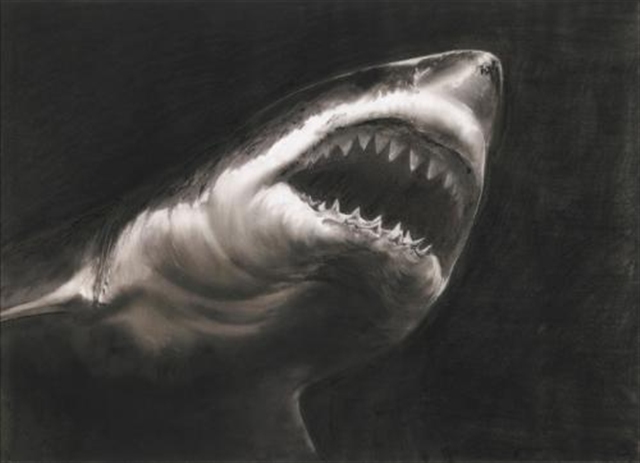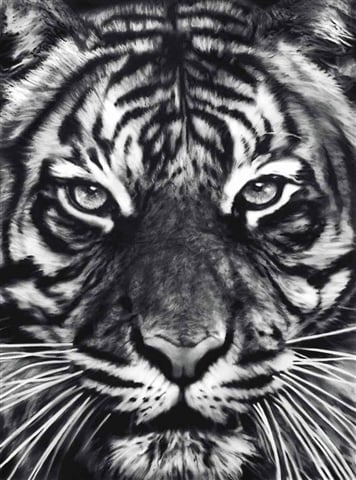Galleries
The Art of Robert Longo
Robert Longo's art is defined by a relentless pursuit of the sublime.

Robert Longo's art is defined by a relentless pursuit of the sublime.

Presca Ahn

The career of artist Robert Longo (American, b.1953) is defined by a melancholic body of work that is less about a particular genre or medium than it is about a sensibility: a clear and unrelenting artistic gaze in which visual hedonism and political disillusionment are in constant tension.

Robert Longo, Study of Dave, c.1981–1993, sold for US$110,500 at Christie’s New York
Longo’s early study of sculpture shaped the intense draftsmanship for which he is best known. Indeed, his iconic Men in the Cities series began with a small relief sculpture he made after watching Rainer Werner Fassbinder’s film The American Soldier. Inspired by this earlier work, he executed a number of monumental drawings in the late 1970s and early 1980s, which were done in charcoal, ink, and graphite. The Men in the Cities drawings (around 60 in total) portray formally dressed men and women caught mid-motion, in dramatically contorted poses. These were originally displayed alongside cast aluminum sculptures evoking urban architecture and rabid corporate struggle.

Robert Longo, Grable (from the Lust of the Eye series), 2005, sold for US$16,585 at Piasa

Robert Longo, Mysterious heart, reversed (study), 2008, sold for US$59,705 at Christie’s London
Sometimes called a Pop artist, Longo stands apart from the typical Pop Art aesthetic because of his obsessive focus on manual processes and his refusal to use direct appropriation in his works. Although based on photographs, his intricate and densely layered charcoal drawings depend on an enormous amount of labor by hand, and this labor is important to Longo as an artist. He has said, “Drawing from photos is a way of reclaiming the images that haunt us. By drawing them, I make them become not just something I am looking at but something that becomes part of me.”1 The drawing process is Longo’s way of fully internalizing the images of mass culture and then transmuting them into his own highly idiosyncratic artistic vision to create images that are dark, cinematic, and visceral.
Longo is fascinated by the iconography of power and violence, an interest that has sometimes been termed fascistic; and it is certainly true that his more politicized works speak directly to the major anxieties that grip the popular imagination. His most overt engagement with America’s legacy is the Black Flags series of distressed and blackened American flags. The consequences of power are also variously explored in his Sickness of Reason series depicting atomic mushroom clouds; Oil and Roses, a 2003 floor sculpture in which a square of red roses is surrounded by a square of black oil; gleaming, close-up depictions of handguns; and the Freud Cycle drawings, which render details of the home that Sigmund Freud abandoned after the Nazis annexed Austria. It is not just political power that interests Longo. Sublime images of gigantic ocean waves, open-jawed sharks, stars, and planets are among his most memorable works.

Robert Longo, Black flag no. 7, 1990, sold for US$19,626 at Christie’s London

Robert Longo, Untitled (Freud’s desk by window), 2004, sold for US$266,500 at Christie’s New York

Robert Longo, Untitled—Black Glass, 2006, sold for US$305,914 at Christie’s London

Robert Longo, Study for Shark, 2008, sold for US$44,190 at Sotheby’s London
The sharp rise in auction prices for Longo’s art reflects a wider appreciation for the works’ potent visual appeal and intense political cynicism—the latter, perhaps, in keeping with the spirit of the times. In March 2013, a three-part work from Men in the Cities sold for US$674,500 at Sotheby’s New York, and the charcoal drawing Untitled (Leo) sold for US$1,575,000 at Christie’s New York in May.

Robert Longo, Untitled (Leo), 2013, sold for US$1,575,000 at Christie’s New York
1 Joyce Korotkin, Robert Longo: Lust of the Eye (Madrid: Galeria Soledad Lorenzo, 2003).